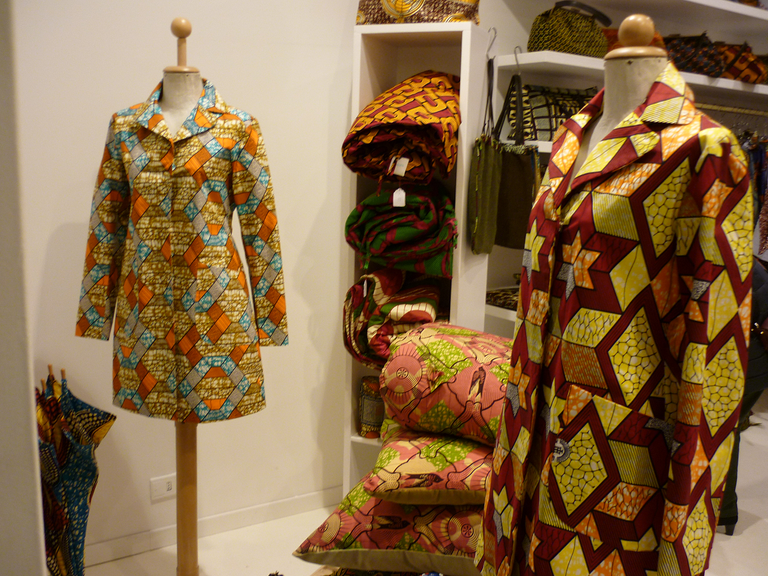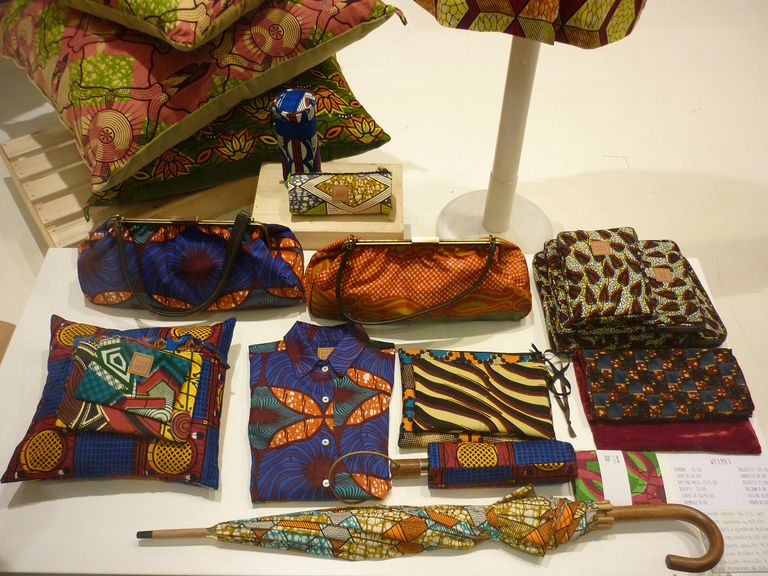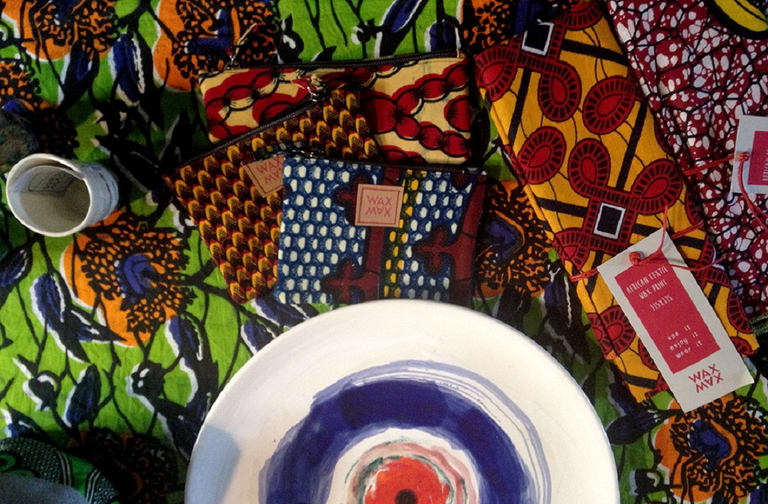
By recovering clothes discarded in the West, Togolese designer Amah Ayiv gives them new life through his high fashion creations.
Wax Max is a collection of garments and home fittings combining African fabrics and manufacture with Western style. A perfect combination of different cultures.
Creating new opportunities for underdeveloped countries is only one of the ideas that drove Elena Vida, a Milanese architect of Armenian origin, and Andrea Folgosa, the Catalan designer who founded the fashion and home furnishing brand “Wax Max”.
Since 2013, the year the brand was founded, the idea was that of bringing a new lease of life to craftsmanship that is increasingly disappearing. Thanks to the project “Working | Women | Win” that promotes collaboration between designers and artisans in Italy, Senegal and Cape Verde, Wax Max has used rather unusual sources of workers.
Indeed the brand, founded by Elena and Andrea, has entrusted the realisation of its products to some special institutions: a small workshop in Boavista (one of Cape Verde islands), where a young Guinean tailor called Djibi works; Gis Gis, a Senegalese cooperative in which a few needy girls from the suburbs of Dakar were taught how to handweave; Alice, the Milanese organisation that offers rehabilitation activities for female prisoners at San Vittore and Bollate, Milan; and some famous workshops, such as Ombrellificio Lanzetti that produces umbrellas for prestigious fashion houses.
But not only is the manufacturing process ethical. The fine cotton used is quintessentially African for its bright colours, patterns and prints and is directly purchased from local producers operating in Ghana, Senegal, Guinea Bissau, Mali and Burkina Faso, all areas in which craftsmanship is an ancient yet not so profitable profession.
If fabrics and manufacture are mostly African, the style and lines of the models are inspired in Western tradition. As Elena Vida confirms, the idea is to create “something you wear willingly even if it’s showy and colourful”.
Siamo anche su WhatsApp. Segui il canale ufficiale LifeGate per restare aggiornata, aggiornato sulle ultime notizie e sulle nostre attività.
![]()
Quest'opera è distribuita con Licenza Creative Commons Attribuzione - Non commerciale - Non opere derivate 4.0 Internazionale.
By recovering clothes discarded in the West, Togolese designer Amah Ayiv gives them new life through his high fashion creations.
All catwalks in July will be broadcast online: after Paris, it’s Milan Digital Fashion Week’s turn. And the biggest beneficiary is the environment.
The book Fashion Industry 2030 aims to contribute to reshaping the future through sustainability and responsible innovation. An exclusive opportunity to read its introduction.
From fashion to design, from architecture to construction, biomaterials and their applications are constantly multiplying. And designers are responding to this revolution in many different ways.
A new study on linen, presented at the Milano Unica trade show, highlights the material’s numerous advantages and low environmental impact.
Victor Papanek spearheaded social and sustainable design based on political awareness rather than consumerism. A biography of the author of Design for the Real World.
Two world-famous designers, Ross Lovegrove and Marcel Wanders, on the relationship between plastic and design. The stimulus for this conversation was offered by an exhibition at the past Milan Design Week inviting 29 designers to rethink their approach to this (now) demonised material.
Getting people to consume less is important, but it’s not enough. There has to be a cultural shift, and design is likely to have a key role in transforming our approach to plastics.
A journey to discover leather tanneries in Dhaka, the capital of Bangladesh, among terrible working conditions, pollution and laws left unenforced.










